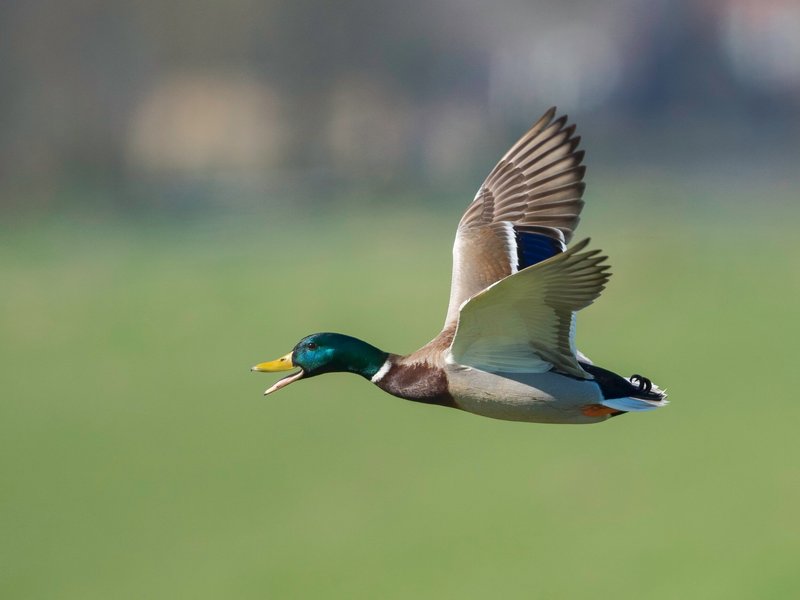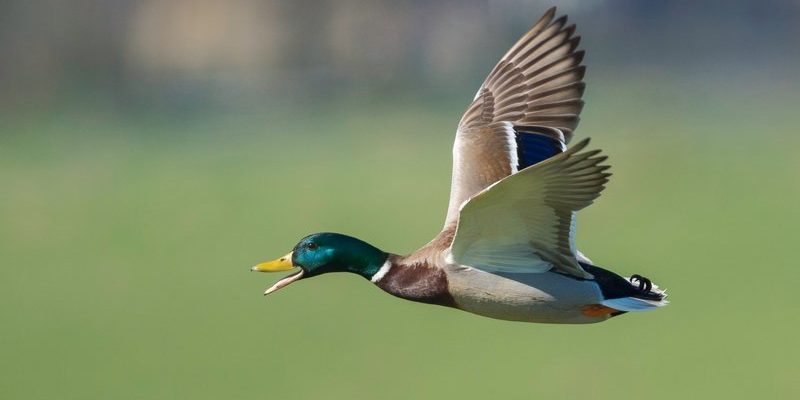
Ducks are fascinating waterfowl that belong to the family Anatidae, which also includes geese and swans. These birds are often found in both fresh and saltwater environments, making them adaptable to various habitats. Ducks typically have broad bodies, short necks, and flat bills, which help them forage for food in water and on land. If you’ve ever seen a duck paddling serenely on a pond, you might not realize just how complex these creatures are beneath that tranquil surface.
One way to think of ducks is as the colorful, quirky cousins of more traditional birds. They come in many shapes, sizes, and colors, often dazzling observers with their vibrant plumage. But ducks aren’t just pretty faces; they play an important role in the ecosystem, helping control insect populations and contributing to the health of wetland habitats. This article will dive deeper into the world of ducks, exploring their characteristics, behaviors, and cultural significance.
Physical Characteristics of Ducks
Ducks exhibit a wide array of physical traits that vary by species, but some common characteristics stand out. Generally, ducks have a rounded body shape that aids in flotation, webbed feet for swimming, and a distinctively broad bill suited for their feeding habits. Male ducks, often called drakes, can be more colorful than females, showcasing vibrant hues to attract mates. For instance, the male mallard is known for its striking green head and intricate feather patterns.
You might be wondering how size varies among different duck species. Ducks can range in size from the small, a tiny teal, to the larger, heavy-set muskovy duck. On average, a typical duck measures between 20 to 30 inches in length. Interestingly, their wingspan can reach up to 35 inches, enabling them to fly great distances during migration.
| Characteristic | Details |
| Size | 20 to 30 inches in length |
| Wingspan | Up to 35 inches |
| Weight | 2 to 6 pounds, varying by species |
| Lifespan | 5 to 10 years, depending on environment |
| Habitat | Ponds, lakes, rivers, wetlands, and marshes |
| Diet | Omnivorous – plants, insects, and small fish |
Types of Ducks
There are numerous species of ducks around the world, each adapted to its environment with unique behaviors and traits. Broadly, ducks can be categorized into two main groups: dabbling and diving ducks. Dabblers feed on the water’s surface or tip their bodies to reach aquatic plants. The mallard and northern pintail are popular examples of dabbling ducks.
On the other hand, diving ducks dive underwater to forage for food. They have a more robust body shape and are exceptional swimmers. Well-known diving ducks include the canvasback and the redhead. Understanding the differences between these groups can enhance your appreciation for their feeding habits and adaptations.
Some species have peculiar behaviors as well. For instance, the wood duck is known for its strikingly beautiful plumage and unique nesting habits. Unlike many ducks, wood ducks prefer to nest high up in tree cavities, showcasing their adaptability to forested habitats. Learning about these specific species helps paint a picture of the diverse world of ducks.
Duck Behavior and Social Structure
Ducks are social birds and often thrive in flocks. This social behavior provides safety in numbers, especially from predators. You might notice how they stay close together when swimming or resting, communicating through a series of quacks, whistles, and grunts. Their vocalizations are not just for communication; they also play a role in mating rituals and establishing territory.
During the mating season, male ducks become more territorial, often engaging in displays of aggression toward rivals. This behavior is not just for show; it helps ensure that they secure a mate and defend their nesting territory. Following courtship, female ducks typically take the lead in nesting and are responsible for raising the ducklings, showcasing a distinct division of roles.
Interestingly, ducklings are precocial, meaning they are relatively mature and mobile shortly after hatching. They can swim almost immediately, which is critical for their survival. Mother ducks guide their young to water sources, teaching them essential skills for survival, such as foraging for food and avoiding danger.
Habitat and Migration
Ducks are truly adaptable birds found across various habitats, from freshwater ponds to coastal lagoons. They thrive in wetlands, which provide essential resources like food and shelter. Wetlands support a diverse range of plant life, which, in turn, attracts the insects and small organisms that ducks eat.
Remarkably, many duck species are migratory, traveling thousands of miles between breeding and wintering grounds. For instance, the northern pintail migrates from North America to Mexico and Central America every fall. This migration not only showcases their resilience but also highlights the importance of conserving wetland habitats along their migratory routes.
The timing of migration is often linked to changes in temperature and daylight, with ducks instinctively knowing when to take to the skies. This remarkable ability to navigate and adapt is a testament to their survival strategies in the wild.
Duck Diet
Ducks are omnivorous creatures that have a varied diet. Their feeding habits can depend on the species and the environment in which they live. Most ducks enjoy a mix of aquatic plants, insects, and small fish. You’ll often find them dabbling in shallow waters, tipping their bodies forward to reach submerged vegetation. This feeding method not only offers sustenance but also helps control aquatic plant populations.
When it comes to food sources, ducks have a natural knack for finding a buffet in their surroundings. They forage in muddy banks, scrape the bottom of ponds, or even glean food from the surface of the water. While dabbling ducks prefer to graze on the surface, diving ducks may go after fish and crustaceans at greater depths, demonstrating their adaptability and resourcefulness.
Providing proper nutrition is crucial for domestic ducks as well. If you’re considering raising ducks, it’s important to ensure they have access to a balanced diet that includes grains, greens, and access to fresh water. This will keep them healthy and thriving.
Cultural Significance of Ducks
Ducks hold a special place in various cultures around the world, often symbolizing friendship, loyalty, and adaptability. In many cultures, ducks appear in folklore and stories, celebrating their unique traits. For example, the story of the “Ugly Duckling” teaches lessons about transformation and self-acceptance, resonating with people of all ages.
Additionally, ducks are often featured in art and literature. Their charming antics and colorful feathers draw artists and writers alike, capturing the imagination. From children’s books to classic fables, ducks remind us of the joys of nature and the importance of community.
On a practical level, ducks are also valued in agriculture for their ability to control pests and as a source of meat and eggs. Duck farms are common, particularly in certain regions, showcasing their importance in both rural and urban communities. This cultural significance underscores the diverse roles that ducks play in our lives.
Duck Conservation
As with many wildlife species, ducks face a range of threats that impact their populations. Habitat loss, pollution, and climate change pose significant challenges to their survival. Wetlands are particularly vulnerable to development and drainage, which affects not just ducks but countless other species that rely on these ecosystems.
Conservation efforts are crucial to protecting duck populations and their habitats. Organizations worldwide work tirelessly to restore wetlands, promote sustainable farming practices, and educate people about the importance of bird conservation. Participating in local conservation initiatives, such as clean-up days at ponds and wetlands, can help make a difference.
Ultimately, understanding the roles ducks play in their ecosystems can lead us to appreciate these amazing birds more deeply. By fostering a connection with nature and advocating for conservation, we all can contribute to preserving the beauty and diversity of our planet’s wildlife.
FAQ
What is the average lifespan of a duck?
The lifespan of a duck can vary based on species and environment. Generally, ducks live between 5 to 10 years in the wild. However, domestic ducks often live longer due to controlled conditions and protection from predators.
Can ducks swim right after they hatch?
Yes, ducklings are precocial birds, meaning they are relatively mature and mobile shortly after hatching. They can swim almost immediately, which is critical for their survival. Their mother guides them to water sources, ensuring they learn essential skills.
What do ducks eat?
Ducks are omnivorous and enjoy a varied diet that includes aquatic plants, insects, and small fish. Dabbling ducks feed on the water’s surface and tip their bodies to reach submerged food, while diving ducks search underwater for snacks.
How do ducks migrate?
Ducks migrate based on changes in temperature and daylight. They instinctively know when to fly to their breeding or wintering grounds, often traveling thousands of miles in the process. This journey highlights their remarkable adaptability.
Are all ducks colorful?
Not all ducks are colorful, though many species exhibit vibrant plumage, especially males. Female ducks usually have more subtle coloring, which helps them blend into their surroundings while nesting and raising ducklings.
Where do ducks typically make their nests?
Dabbling ducks often build their nests on the ground near water sources, while some species, like wood ducks, prefer high nesting sites in tree cavities. The nesting behavior varies depending on the species and the environmental conditions.
Can ducks be kept as pets?
Yes, ducks can be kept as pets, and many people enjoy raising them for companionship or for their eggs and meat. It’s essential to provide them with a safe living environment and proper nutrition to thrive.
Do ducks quack all the time?
While many people associate ducks with the sound “quack,” not all ducks quack frequently. Different species have unique vocalizations, including whistles and grunts. Male and female ducks also produce different sounds, especially during mating season.
What is the role of ducks in the ecosystem?
Ducks play a vital role in maintaining healthy wetland ecosystems. They help control insect populations, contribute to seed dispersion, and serve as prey for various predators. Their feeding habits also help manage aquatic plant growth.
How can I help conserve duck populations?
You can help conserve ducks by supporting local conservation efforts, participating in wetland restoration projects, and advocating for sustainable practices in your community. Educating others about the importance of ducks and their habitats is also invaluable.
What are some common predators of ducks?
Ducks face several natural predators, including foxes, raccoons, and birds of prey. Eggs and ducklings are particularly vulnerable to predators. Awareness of these threats can guide conservation efforts to protect duck populations.
Can ducks recognize their owners?
Yes, ducks can recognize their owners, often forming strong bonds. They may respond to familiar voices and even seek out their caregivers for food and companionship. This social bond can be quite rewarding for duck owners.

